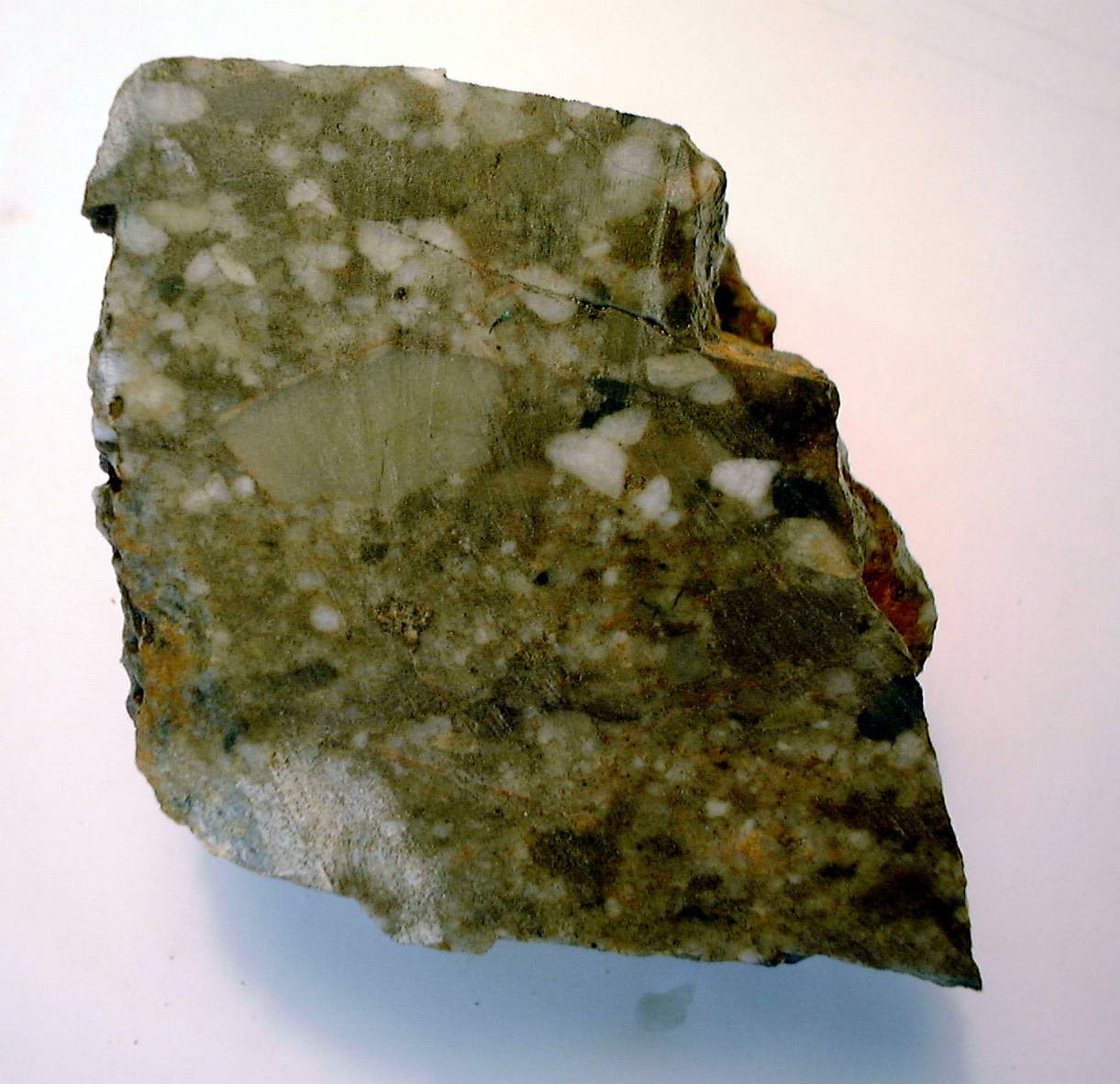meta data for this page
Return to Sierra de Tecka/Tepuel main page
Chapter 4: Lithological Units in the Mapping Area
The rocks exposed in the area have been assigned to four main mapping units and the alluvial cover. The Tepuel Group is the oldest unit with Late Paleozoic sedimentation ages, overlain unconformably by unmetamorphic Liassic marine to continental sediments and pyroclastic rocks of the Lepá Formation. Early Cretaceous gabbroic rocks of the Tecka Formation have intruded along the unconformity and the older units. Tertiary dykes as well as pyro- and epiclastic deposits overly unconformably the gabbro. Alluvial regolith and soils cover the lower slopes of hills and valley floors.
4.1 Tepuel Group
This mapping unit shows significant differences in comparison to the overlying Liassic rocks. Main characteristics are the consolidated or very low-grade metamorphic, compositionally mature quartz-dominated sediments, the occurrence of folds, outcrop morphologies and poor preservation of sedimentary structures. Therefore, these rocks are assigned to the Upper Carboniferous to Lower Permian Tepuel Group, which has been proven by MÁRQUEZ (PERS. COMM.). Neither a lithological subdivision nor an assignment to subunits that were established by PAGE ET AL. (1984) has been possible.
4.1.1 Field observations
Outcrops of the Tepuel Group sediments are restricted to the southwestern part of the mapping area near the Pto. Rios (Loc. 17-19, 27-30, 112, 114 and 155-157). The exposure conditions were bad because of weathering, moss, grass and scrub vegetation. Silt- and fine-grained sandstones of this unit show smooth internal structures that are interpreted as small-scale folds. Often sedimentary structures and bedding could not be identified equivocally. At Loc. 29 and L175 (Area 3, Lutz Limburg) folded strata of this unit are exposed. Loc. 29 shows an isoclinal NW- vergent fold in a succession of conglomerates, sandstones and siltstones (Figs. 33 & 34). A detailed description is given in CHAPTER 5 –TECTONICS AND STRUCTURES. The delimitation to the overlying Liassic rocks is characterised by an angular unconformity best exposed in the hill N of the base camp (see figure 1).
 Fig. 1: Angular unconformity between rocks of the Tepuel Group and Liassic sediments (above red line) in the hill north of the base camp. View from area no. 2 to NE, Co. Redondo in left background.
Fig. 1: Angular unconformity between rocks of the Tepuel Group and Liassic sediments (above red line) in the hill north of the base camp. View from area no. 2 to NE, Co. Redondo in left background.
The most characteristic lithology of the Tepuel Group sediments are light-grey and mature arenites, composed mainly of well-rounded quartz grains (e.g. CH 41 & CH 167). The grain sizes vary between 0.5 and 1mm. Other minerals identifiable with a hand lens are mica and ore minerals. The general character of these sediments is very massive. Polymictic, dark-coloured conglomerates with well- rounded components occur as thin layers (5 to 10 cm thick) (e.g. Loc. 74) in the quartzitic arenites described above, representing graded bedding. The grain size ranges from 0.3cm to 3cm, the amount of matrix is significantly higher than 15%. According to FÜCHTBAUER (1988), this sediment is characterised as a diamictite or paraconglomerate. Quartz is the dominating mineral. figure 2 shows a boulder found around Loc. 28, representing a conglomerate with internal decreasing grain-size from pebble- to coarse-grained sand. Subordinate, massive yellowish fine-grained sandstone and siltstone layers with variable thickness also occur in this sequence.
 Fig. 2: Sample CH168. Clast supported polymictic conglomerate of the Tepuel Group. Note the dark colour. Height of specimen is 8cm.
Fig. 2: Sample CH168. Clast supported polymictic conglomerate of the Tepuel Group. Note the dark colour. Height of specimen is 8cm.
4.1.2 Microscopic description
Three thin sections have been prepared of this unit. All sections show siliciclastic sediments composed mainly of quartz grains. Samples CH167 (Loc. 28, Fig. 10) and CH41 (Loc. 74, Fig. 11) have at least 90-95% of well-rounded and well-sorted quartz grains with a very low amount of matrix and detrital Feldspar grains. The average grain sizes range between 350-450μm (CH41) and 400-550μm (CH167), respectively. Epitactic grown quartz cement has filled the pore space. Iron oxide and clay coatings mark the outline of the original grains that were overgrown by the cement. Some quartz grains show undulose extinction as well as dynamic recrystallisation, which  may reflect their metamorphic origin. Inclusions of rutile and biotite suggest probably a magmatic source region for approximately 20% of the quartz grains. Pressure solution phenomena and strain induced boundary migration are the microstructures indicating temperatures of about 300–350˚C.

